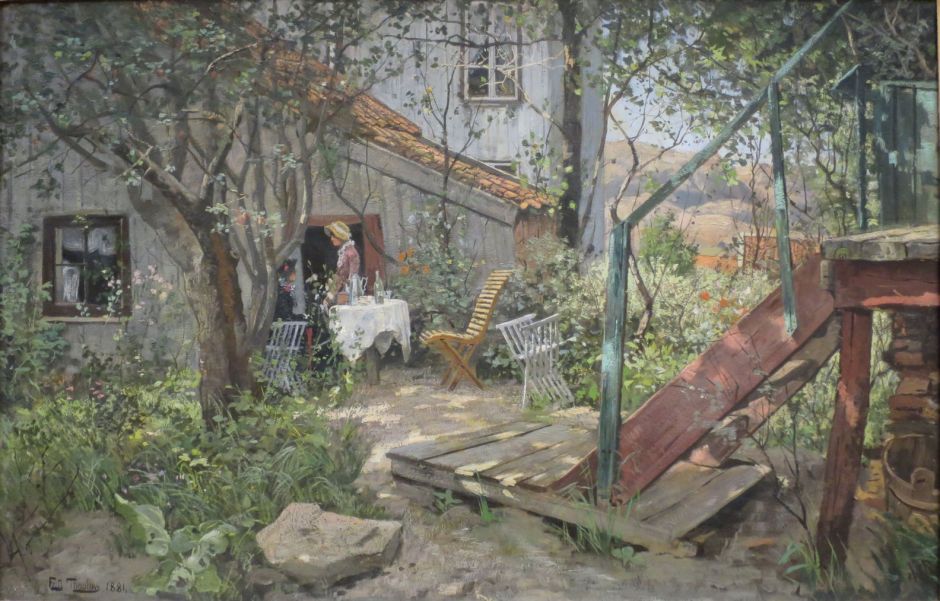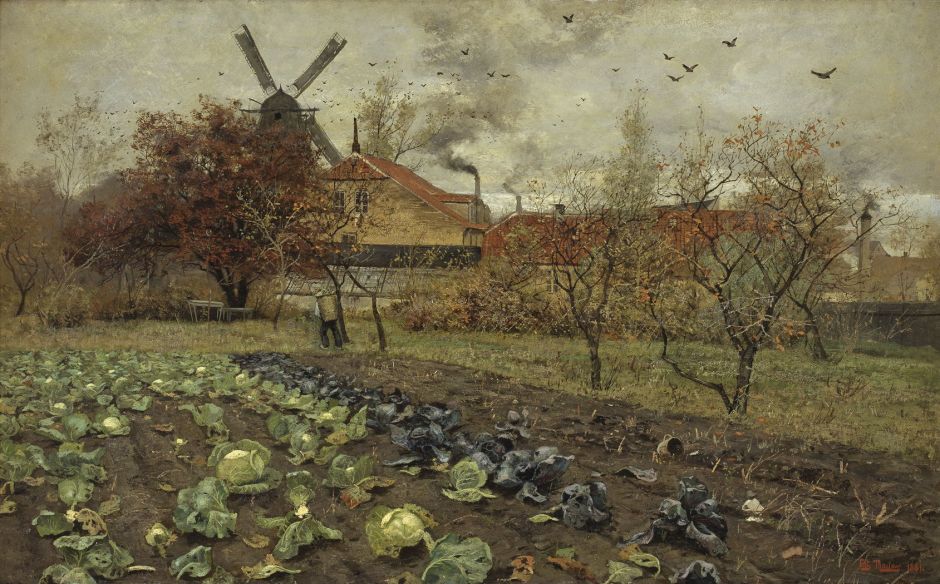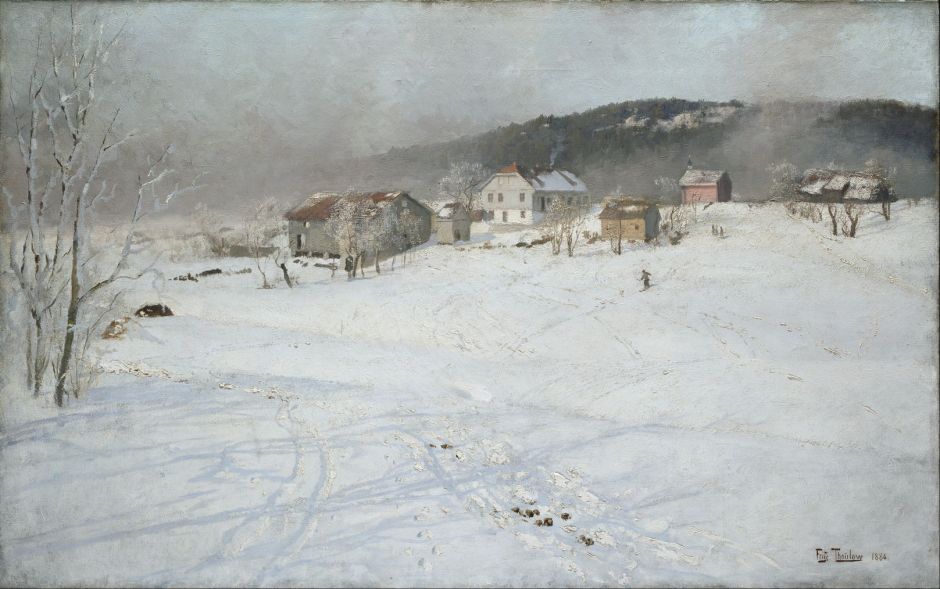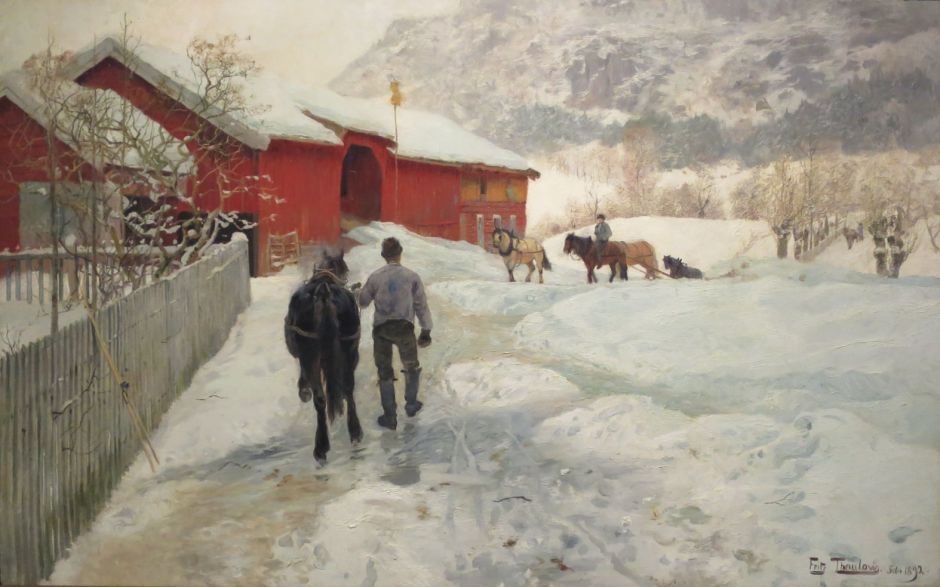Most of those painters known in their time as social realists or Naturalists were, at least in part, figurative artists, like Jules Bastien-Lepage, and Christian Krohg. Their figures are important in their works – women gleaning grain, children of the rural poor, labourers, and more – and it is they which actually define their Naturalism.
Few Naturalists, other than those now labelled Impressionists, were pure landscape artists. The Norwegian Frits Thaulow (1847–1906) was, and in this and the next article I show a representative selection of his work.
Thaulow was born in Oslo, into the family of a wealthy pharmacist. In 1870, he went to live in Copenhagen while he studied at the Academy of Art there, and from 1873 he was a pupil of the great Norwegian landscape painter Hans Gude in Karlsruhe, Germany.
There, Thaulow met and became close lifelong friends with Christian Krohg. In the summer of 1874, Thaulow visited Paris, where he was attracted to the paintings of realists like Jules Breton. He then met and married the sister of Paul Gauguin’s wife.
In the summer of 1879, Krohg persuaded Thaulow to sail in Thaulow’s yacht to the fishing village of Skagen, on the northern tip of Jylland (Jutland), to the south of Norway. The pair became early members of the Skagen artists’ colony, famous now for Danish Impressionism.

On the coast, Jaeren, Norway from 1879 is one of Thaulow’s early landscapes. Although he painted the fishing folk of Skagen and scenes on the shore there, I have been unable to find usable images from his time at Skagen. This rather dark view over the undulating dunes of Norway is realist in its fine detail, such as the wayside flowers in the foreground, and the flocks of birds above.
Thaulow returned to Norway in 1880, where he worked with Krohg and Erik Werenskiold to establish the first national art exhibition in the autumn of 1882. He also established a school of plein air painting at Modum, near Oslo. For much of the 1880s, Thaulow painted in and around the colony at Åsgårdstrand, south of Oslo on the west bank of Oslo Fjord. Edvard Munch was to buy a house there in 1898, where he painted many of his finest works.

Before researching this article, the only painting of Thaulow’s which I knew was The Train is Arriving painted in oil on paper in 1881. Although a little low in chroma, perhaps, it is easily seen as an Impression, painted quickly in front of the motif, capturing a brief instant in time. Alongside some of his other oil sketches, it would be very easy to conclude that Thaulow was nothing more than a Norwegian manifestation of Impressionism, and even his motif here is one which was popular among the French Impressionists.

Summer Day (1881) is more typical of his earlier finished works, though: a beautifully-detailed realist painting of a slightly wild country garden on a fine summer’s day, even down to the silver coffee pot and glass bottle on the table, and the two women in conversation. If his background is a little vaguer and less sharp, it is allowed only a small glimpse at the upper right.

Thaulow’s painstakingly-detailed View of Amerikavej in Copenhagen (1881) shows every one of its cauliflowers different, and the fine foliage and twigs of each of its trees and shrubs. But, unlike conventional Naturalist paintings, the farmer with a large wicker basket on his back is distant, and walking towards a couple of rickety old tables.

Thaulow seems to have discovered what was going to be his recurrent theme for much of his career by 1883, when he painted this scene of Winter at the River Simoa. A lone woman, dressed quite lightly for the conditions, is rowing her tiny boat over the quietly flowing river, towards the tumbledowns on the other side.
The surface of the river shows the glassy ripples so common on semi-turbulent water, and the effect on the reflections is visibly very complex. The distant side of the river is also partly frozen, breaking its reflections further.

Winter (1886) is a more conventional snow-scene from a remote hamlet in Norway. Thaulow shows subtlety in the blurring of some passages, where presumably the loose surface powder is being blown by the wind.

River (1886) shows his continuing detailed realism and addiction to painting the surface of rivers, here probably in the early spring.

Thaulow not only explored the optics of water reflections, but in his Spring Thaw from 1887 includes an overall softness throughout the painting, which captures perfectly the peculiarity of such scenes in early spring. It is tempting to suggest that he may have used a camera to assist him create this effect.

Timber Haulers Returning Home (1892) also explores the optical effects of the harsh Norwegian winter, its soft-focus progressively increasing with depth in the image.
In 1892, Thaulow moved to France, where he remained based for the rest of his life.

